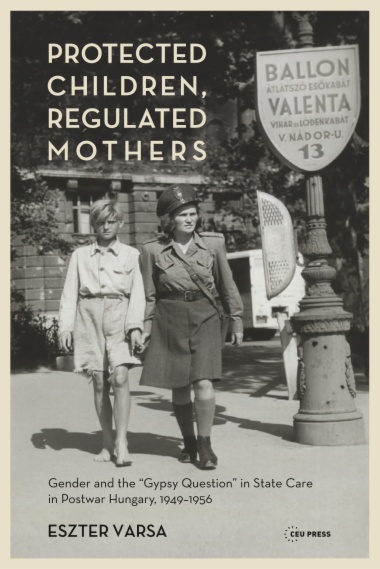Protected Children, Regulated Mothers examines child protection in Stalinist Hungary as a part of twentieth-century East Central, Eastern, and Southeastern European history. Across the communist bloc, the prewar foster care system was increasingly replaced after 1945 by institutionalization in residential homes. This shift was often interpreted as a further attempt to establish totalitarian control. However, this study—based on hundreds of children's case files and interviews with institution leaders, teachers, and people formerly in state care—provides a new perspective. Rather than being merely a tool of political repression, state care in postwar Hungary was often shaped by the efforts of policy actors and educators to address the myriad of problems engendered by the social and economic transformations that emerged after World War II. This response built on, rather than broke with, earlier models of reform and reformatory education. Yet child protection went beyond safeguarding and educating children; it also focused on parents, particularly lone mothers, regulating not only their entrance to paid work but also their sexuality. In so doing, children's homes both reinforced and changed existing cultural and social patterns, whether about gendered division of work or the assimilation of minorities. Indeed, a major finding of the book is that state socialist child protection continued a centuries-long national project of seeking a “solution to the Gypsy question,” rooted in efforts to eliminate the perceived “workshyness” of Roma.
- Cover
- Front matter
- Table of Contents
- List of Figures
- List of Tables
- Abbreviations
- Acknowledgments
- Introduction
- Chapter 1: Child protection in early state socialist Hungary
- A brief introduction to the historical context: Hungary, 1949–1956
- Historical and legal background of child protection in Hungary in the late nineteenth and the first half of the twentieth century
- Child protection as a “solution to the Gypsy question” in nineteenth- and twentieth-century Hungary
- Chapter 2 “The minor would hinder the mother in finding employment”: Child protection regulating women’s labor force participation
- A lack of child care services and “delinquent” children
- “The minor would hinder the mother in finding employment”: Child protection as a tool to force unemployed mothers to enter paid work
- “As they are Gypsies, they are not employed”: The negative evaluation of Romani motherhood
- Parents requesting their children’s institutionalization for the purposes of child care
- Chapter 3 “She occupied herself with men”: Child protection regulating the sexual morality of lone mothers and single young women
- Concern about women’s sexual morality in early state socialist Hungary
- The regulation of lone mothers’ sexuality
- The representation of lone mothers in the case files of children in state care
- The regulation of Romani women’s sexuality
- Regulating the sexuality of single young women
- Chapter 4 “Make them experience the good taste of productive work”: Residential care as an institution of education
- Reformatory and reform pedagogy: The origins of education for workin residential care education
- The continuity of education for work in the curricula and educational practice of residential homes under state socialism
- Education for work in the socialist context: Reform pedagogical and reformatory traditions
- “Make them experience the good taste of productive work”: What education for work meant to child protection professionals during and after socialism
- Turning work into a habit
- Education for work as education for life: Creating gendered habits
- Education for work as a means towards the assimilation of Roma
- Chapter 5 “He was three years old but could not speak and had no emotional attachment to anybody”: State care as discourse on Stalinist political terror in socialist Hungary
- Emmi Pikler and the history of “Lóczy”
- The cases of László Rajk Jr. and Mátyás Donáth
- Two mothers’ (re)construction of their children’s institutionalization
- Conclusion
- Appendix.
- Biographical information
- Bibliography.
- Index

